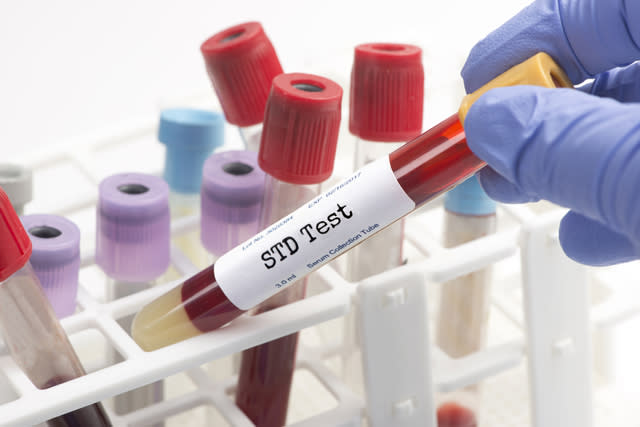STD Testing Technology is a Thing

While STDs and HIV may not get as much discussion as they did a couple of decades ago, the incident rates are actually on the rise. And sexual partners aren't the only ones taking notice – so are tech companies who have a goal of making STD testing easier and more convenient.
Four STD Technologies to Keep an Eye On
In 2015, the combined rates of chlamydia, gonorrhea, and syphilis reached the highest reported number of cases ever. Even more depressing is the fact that 15 to 24-year-olds account for two-thirds of all chlamydia diagnoses and half of all gonorrhea cases. In other words, something needs to be done to educate and prevent the rapid rise in these cases.
STDs probably aren't something you talk about a lot in public, but there's certainly no reason to shy away from the subject. The more conversation the better, especially when it comes to prevention and detection.
Here are some new technologies leading the way.
1. Color-Changing Condoms
What if a condom could actually change colors when being used if an STD were detected? This is something three London-based teenagers are looking into.
How would it work? It's based on a common testing method that's already used in healthcare facilities around the world; enzyme-linked immunosorbent assay. These are the color-change strips that detect things like HIV and herpes.
While the technology isn't currently feasible right now – they have to make sure the integrity of the condom itself isn't compromised – it's something that could be further developed down the road.
2. Flexible and Private Testing
Testing for STDs is very important, but it hasn't always been easy. Who wants to call up their primary care doctor and ask for an STD screening? However, thanks to new business models and changing protocols, there are more convenient options for individuals to order free STD tests.
A quick online search is all it takes to find private and discreet services that let you schedule appointments anonymously or even test from home. This removes some of the friction between patients and providers and increases the likelihood that people will get tested.
3. DNA Technology
DNA, it seems, has the answers to all of life's mysteries. The latest advancements in this area have transformed Nucleic Acid Amplification Tests (NAATs) by giving them the ability to detect specific components of DNA.
"NAAT tests directly identify the genetic material of a virus or an infecting organism, meaning they are extremely accurate markers for disease," expert Pieter Haas explains. "Initially, the test was only used to detect Chlamydia and Gonorrhea. Today, NAAT testing is being used to detect many more STIs such as HPV (human papillomavirus), HIV, herpes simplex virus, ureaplasma, trichomoniasis, chancroid, mycoplasma, and donovanosis."
4. Mobile Apps
There's an app for that! In early 2016, new healthcare company Mately announced that it would be building a subscription-based digital STD testing platform that would allow members to mail in a blood or urine test and get results back via a mobile app.
Since increases in STD incident rates have been correlated to the increased popularity of dating apps, members will be able to display a badge on their profile that says they've been tested. It doesn't divulge information but provides a good starting point for further conversation.
It Takes More Than Good Technology
Ultimately, safe sex requires more than new tools and technology. It requires careful and responsible actions by everyone involved. However, it is good to know that there's innovation happening in an area that needs more attention. It'll be interesting to see how these technologies grow over the years and what kind of positive changes are produced.
